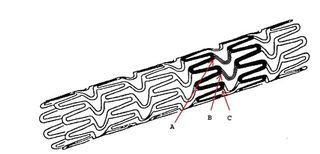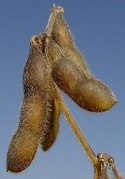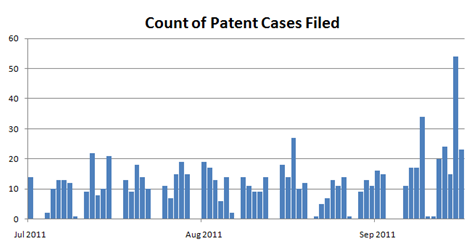Opening of Franklin Pierce Center for IP
- UNH Law is proud to announce the official opening on September 30 & October 1 of the Franklin Pierce Center for Intellectual Property with an intellectual property works-in-progress conference featuring presentations by scholars from law schools in the Northeast and alumni of UNH Law. Chief Judge Randall Rader will serve as special guest speaker. Other guest include: Jonathan Dudas, Judge Newman, and Judge Gajarsa. [Link]
Biotech in Ottawa is Booming?
- Ottawa Life Science Cluster currently home to over 90 companies focused on life science and biotechnology research and innovation. Also, there are over 50 other companies that have a secondary focus in life sciences and biotechnology. Leading the charge for commercialization is the Ottawa Centre for Research and Innovation (OCRI). With the increased commercialization in Ottawa, comes an increase in patent applications in Canada, the US, and beyond. [Link] [Link]
Great Patents!
-
Great Patents: Advanced Strategies For Innovative Growth Companies, is a book that aims to inform executives on how best to use patents to improve their competitiveness. The book has a total of 12 chapters and each chapter is written by an individual in the patent world. The chapters in the book are broken into two categories: Strategies and Valuation. Companies pursue patents to make money, and this book is very useful to help companies discover what they can do with their patents that they may not have previously considered. While the book is aimed at executives and the like, it is also a useful tool for law students and others. Most law students are not familiar with the business world of patents and this book gives a perspective different than what is taught in law schools.
- About the Author: David Orange is a patent attorney in Washington, DC. He is active in the start-up space as an investor and advisor.
Patent Jobs
- Goldberg Cohen is seeking an IP associate with 2-5 years of experience. [Link]
- Womble Carlyle Sandridge & Rice is looking for mechanical patent attorneys with at least 3 years of experience. [Link]
- Verenium is searching for a patent agent with a minimum of 5 years of experience. [Link]
- Cleveland Golf/ Srixon is seeking a Sr. patent engineer with a BSME and at least 4 years of experience. [Link]
- The Michaud-Kinney Group is looking for a legal assistant to work at their Middletown, Connecticut location. [Link]
- Qualcomm is searching for a US patent attorney or a registered India Patent Attorney/Agent with at least 5 years of experience. [Link]
- Qualcomm is looking for a patent counsel with 3+ years of patent prosecution experience. [Link]
- Steptoe & Johnson is seeking associates with a minimum of 4 years of experience in patent litigation and with a technical background. [Link]
- The Office of the Solicitor at the USPTO is searching for an experienced Patent Attorney. [Link]
- Dynamics Inc. is seeking a patent attorney with an EE degree, to work at their Pittsburgh location. [Link]
Upcoming Events:
- Boston University School of Law and the Kauffman Foundation will be holding a Workshop on Innovation and Patent Harmonization at Boston University School of Management on September 30-October 1. The workshop will cover the effect of harmonization in both advanced countries, such as the US, and in developing nations, with a particular focus on China. Anyone interested in attending, please RSVP to Elizabeth Aggot at eaa@bu.edu. [Link]
- American Conference Institute's 12th Annual Maximizing Pharmaceutical Patent Life Cycles will take place in New York on October 4th-5th. The conference is one of the leading sources of information and analysis on the patent life cycle management. (Patently-O readers can register with code PO 200 for a discount) [Link]
- C5 will be holding the 21st annual Forum on Biotech Patenting in London on October 5th-6th. The 2011 London Biotech Patenting Forum will focus on the latest legal developments affecting biotech companies and how to implement successful methods and strategies for drafting and filing patent applications in multiple jurisdictions. (Patently-O readers can save 100 pounds by using discount code PO 100) [Link]
- Houston Intellectual Property Law Association (HIPLA) will be holding its Annual IP Institute in Galveston, Texas October 6-8. The Institute will feature topics such as: Do's and Don'ts in IP Licensing, Due Diligence and Ethics in Acquisitions, Patent Prosecution Under the New Cases and Inducement of Patent Infringement after Global Tech Appliances v. SEB. The guest speaker will be Lord Justice Robert "Robin" Jacob, Court of Appeal of England and Wales. [Link]
- The 17th Annual Advanced ALI-ABA Course of Study for the Corporate Counsel and the Private Practitioner: Trial of a Patent Case will be held in Chicago October 13-14. Guest speakers include: Judge James Holderman, Judge Liam O'Grady, Scott Coonan, James Leeds, and many more individuals. (Patently-O readers can get 30% off with discount code CT017POB) [Link]
- The 4th Annual Inland Empire Intellectual Property Institute (IEPI) will be held in Spokane, Washington on October 14th. The program will cover: developments in patent prosecution, patent litigation, copyright and trademark; ethical considerations for IP attorneys; patent reform and its impact on the practicing attorney, and many more topics. Guest speakers include: David Powers, Nancy Kim, Shirley Anderson and many other individuals. [Link]
- American Conference Institute will be holding a FDA Boot Camp Device Edition conference on October 25th-October 26th in Chicago. (Patently-O readers can register with code PO 200 for a discount) [Link]
- Licensing Executives Society (LES) will be holding their annual meeting on October 16-19 at the Manchester Grand Hyatt in San Diego. Guest speakers include, Martha Ries, VP of IP Management, The Boeing Company and Barbara Dalton VP, Venture Capital, Pfizer. [Link]
- The University of Texas at Austin will hold its 16th Annual Advanced Patent Law Institute on October 27-28. The program will cover: recent developments in claims construction and claims drafting, cost savings in litigation, inequitable conduct after Therasense, and many other topics. [Link]
- IPMI is holding the IP Law & Management Institute on November 6th – 8th at the Rancho Las Palmas in Palm Springs, CA. Hailed as "One of the few programs geared to experienced in-house IP Counsel", the Institute is a CLE-accredited program designed to provide time-starved Heads of IP with the Opportunity to meet and network with their peers, learn from the best practices and validate solutions and services. [Link]
Contact Lawrence.Higgins@patentlyo.com with leads for future Bits and Bytes.

 Monsanto Co. v. Vernon Bowman (Fed. Cir. 2011)
Monsanto Co. v. Vernon Bowman (Fed. Cir. 2011)